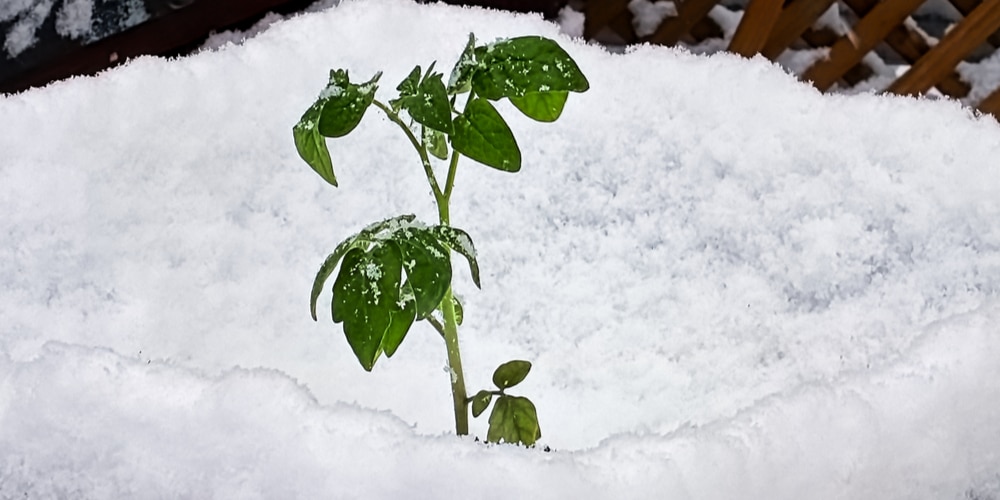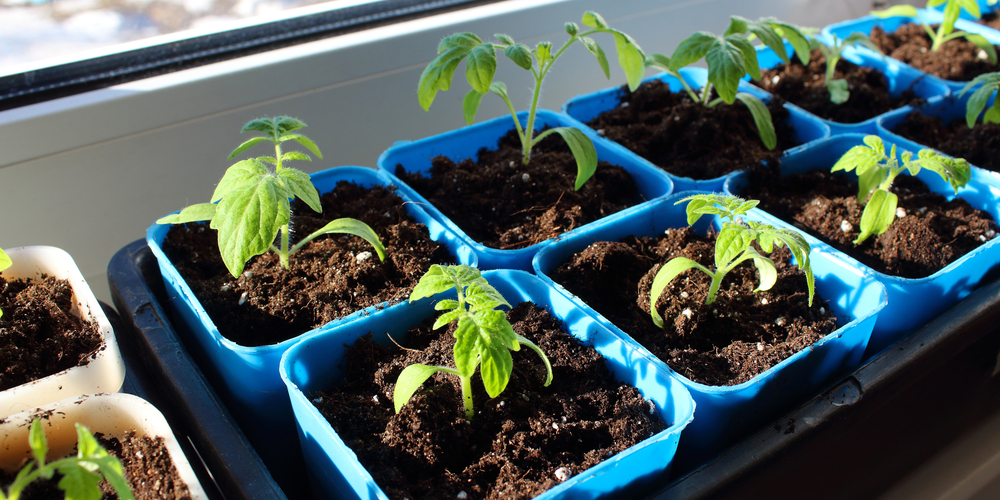Tomatoes are long-season, warm-weather plants, which apparently means they are sensitive to frost. As such, sudden temperature swings in late spring and early fall can mean the untimely demise of your tomato plants.
That’s why you not only need to dutifully check the weather forecast every day around this time of the year but also pick your tomatoes or cover the plants when frost threatens.

If you plant your garden too early and the danger of late spring frost threatens, appropriately covering your tomato seedlings can keep them from being damaged by the cold wind and freezing temperatures. Thankfully, there are many options and ways to protect your tomato seedling.
Generally, cloches, purchased or homemade, offer the best way to protect tomato seedlings from late spring frost. This post will cover more about protecting tomato seedlings from the dangers of frost.
Protecting tomato seedlings from cold and frost

Tomatoes are warm-weather plants, and, to the surprise of many, they are not sensitive to frost alone. Cold snaps and consistently low temperatures can damage or destroy your tomato seedlings.
For this reason, you need to protect your tomato in late spring, early fall, and any time of the year when the temperature is forecast to dip overnight.
Thankfully, when it comes to protecting tomato plants, there are many options to suit just about budget and preferences. Here are some of the techniques that will do a great job of protecting your tomato seedlings from frost.
1. Using garden cloches
Usually clear and dome-shaped, a garden cloche is a glass or plastic cover placed over young plants to protect them from cold, insects, and damage by drying winds. They are usually designed with an opening in the top, which can be sealed or left open to allow air to vent, ultimately preventing overheating.
If you decide to use a cloche, cover up your tomato seedlings at dusk and remove the cloches early in the morning the next day.
It may be worth noting that glass clothes tend to be an expensive option. If you are looking to save money and still protect your tomato seedlings, you can purchase plastic cloches or make your own. Homemade cloches cost virtually nothing as long as you have empty plastic bottles or can get several from friends.
2. Using row covers
While cloches offer a quintessential way to protect tomato seedlings from frost and other elements, they can be too expensive for gardeners with relatively large gardners.
For gardeners having large gardens with long rows, row covers offer a suitable way to protect your tomatoes from cold. Essentially row covers are large clear sheets used to protect seedlings from cold, pests, and wind.
To use row covers, create a tent-like structure by driving stakes into the ground around your tomato plants and along the lines.
To determine the length of the stakes, measure the height of the tallest tomato seedling in each, then add around two feet so that the cover will be about one foot above the tallest seedling in a row.
Once you have the steaks ready, drape a sheet of frost cloth designed specifically for gardens over the structure in the evening and remove the clever in the morning. The good thing about row covers is that they are designed with breathable materials, so there is no need for a vent.
3. Build a greenhouse
This is an expensive way to protect your tomato seedlings, but it offers a long-term solution for protecting your tomato and other warm-season crops. Even better, it extends your growing season, making it possible to grow tomatoes year round.
A greenhouse is essentially a frame covered in glass or plastic, and you can build it to the design of your liking. If you are a savvy DIYer, the good thing is that you can build your greenhouse with everyday home tools.
How To Protect Tomato Seedlings From Frost: Conclusion
It is easy to be tempted to plant tomatoes early, especially if you are fond of growing varieties that take longer to mature. On the other hand, it is so unfortunate that tomato seedlings are highly susceptible to frost as well as low night temperatures.
Should dangers of late spring frost threaten, appropriate covers will help ensure that your seedlings are not damaged by the cold wind and freezing temperatures. Hopefully, this post will help you protect your tomato seedling from frost.
Related Article: When to Plant Tomato Seedlings From Seed Trays